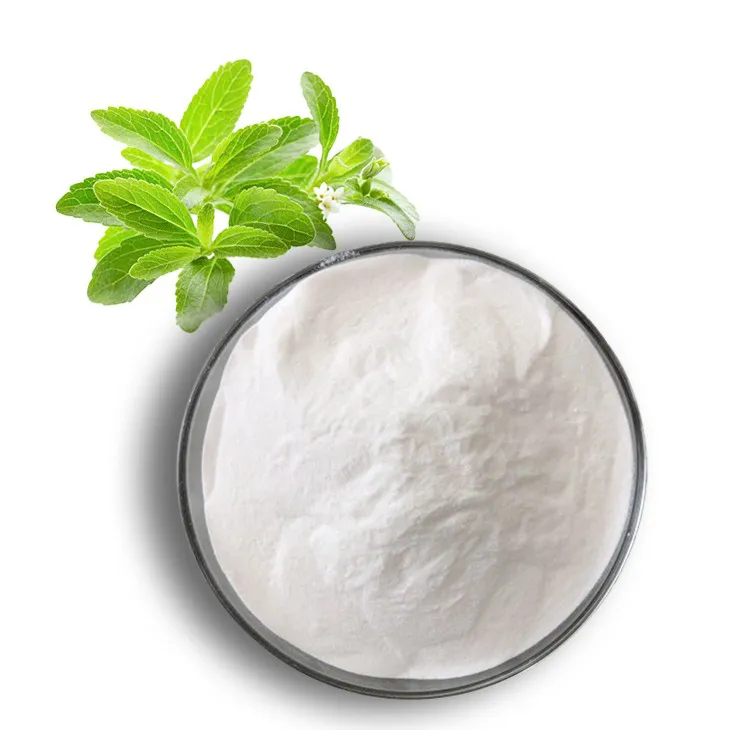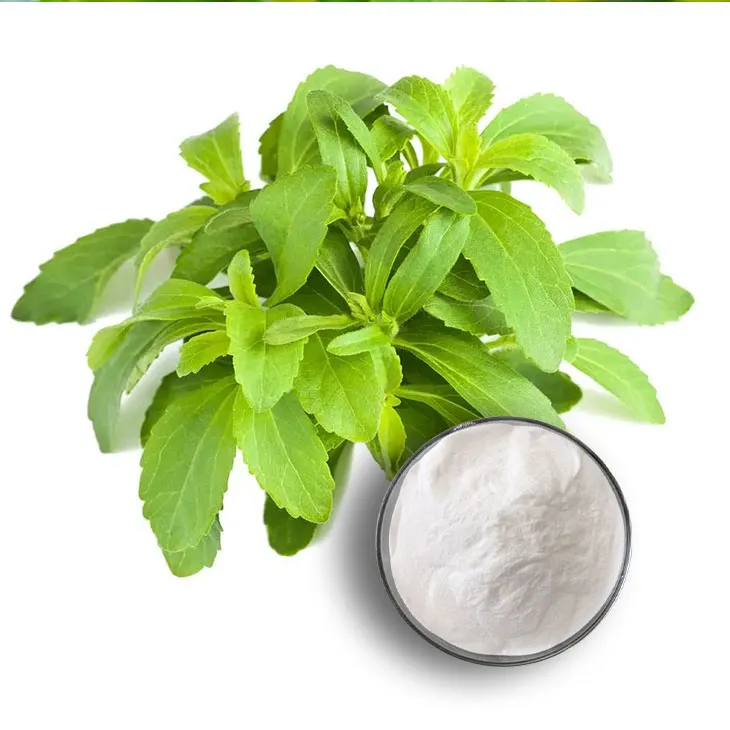- 0086-571-85302990
- sales@greenskybio.com
From Leaf to Sweetness: A Glimpse into the Stevia Extraction Process in India
2024-08-12

1. Introduction
Stevia, a natural sweetener, has been gaining significant popularity in recent years. India, with its diverse agricultural landscape and growing technological capabilities, has emerged as an important player in the Stevia Extraction process. This article delves into the journey of stevia from its growth as a plant to the extraction of its sweet components, exploring how India's unique factors influence this process and its implications for the global alternative sweetener market.

2. The Stevia Plant: Growth and Cultivation in India
2.1 Climate Requirements
Stevia plants thrive in a warm and humid climate. India, with its vast geographical expanse, offers a variety of climatic zones suitable for stevia cultivation. In regions with moderate to high rainfall and temperatures ranging from 20 - 30 degrees Celsius, stevia plants can grow well. For example, parts of South India, such as Kerala and Tamil Nadu, provide the ideal climate conditions for stevia cultivation during certain months of the year.
2.2 Soil Conditions
The stevia plant prefers well - drained, fertile soil. In India, soil types vary across different regions. In some areas, loamy soil rich in organic matter is found, which is conducive to stevia growth. However, proper soil preparation is still necessary. Farmers often need to add compost and fertilizers to ensure the soil has the right nutrient balance. This includes essential nutrients like nitrogen, phosphorus, and potassium. Additionally, soil pH also plays a crucial role. Stevia plants generally grow well in soil with a pH range of 6.5 - 7.5.
2.3 Cultivation Practices
- Stevia is usually propagated through seeds or cuttings. In India, both methods are commonly used. When using seeds, farmers need to ensure proper germination conditions, which may include maintaining a consistent temperature and moisture level.
- Once the plants are established, proper spacing is crucial. Adequate spacing between plants allows for proper air circulation and sunlight exposure, which are essential for healthy growth. In India, a spacing of around 30 - 40 centimeters between plants is often recommended.
- Water management is another important aspect of stevia cultivation. Over - watering can lead to root rot, while under - watering can stunt the growth of the plants. Farmers need to monitor the soil moisture levels regularly and irrigate accordingly.

3. Harvesting Stevia Leaves
3.1 Timing of Harvest
The timing of stevia leaf harvest is critical. In India, the optimal time for harvesting is usually when the plants reach maturity, which is typically around 90 - 120 days after planting. At this stage, the leaves contain the highest concentration of sweet compounds. Harvesting too early may result in lower yields of the sweet components, while harvesting too late may lead to a decline in quality.
3.2 Harvesting Methods
- Manual harvesting is the most common method in India. Workers carefully pick the leaves by hand to ensure that only the mature leaves are harvested. This method allows for selective harvesting, which is important as the younger leaves may not have reached the optimal level of sweetness.
- Some larger farms may also use mechanical harvesting methods, but this requires careful calibration to avoid damaging the plants and to ensure that only the appropriate leaves are collected.

4. The Stevia Extraction Process
4.1 Pre - treatment of Leaves
Once the leaves are harvested, they undergo pre - treatment. This involves cleaning the leaves to remove any dirt, debris, or insects. In India, simple washing techniques are often used, such as rinsing the leaves in clean water. After cleaning, the leaves are usually dried. Drying can be done either in the sun or using mechanical dryers. Sun - drying is a traditional method in India, but mechanical dryers offer more control over the drying process and can ensure a more consistent quality.
4.2 Extraction Techniques
- One of the common extraction methods in India is solvent extraction. Solvents such as ethanol or water are used to extract the sweet compounds from the stevia leaves. Ethanol extraction is often preferred as it can effectively extract the stevia glycosides, which are the main sweet components. The process involves soaking the dried leaves in ethanol for a specific period, usually several hours to a few days, depending on the desired concentration.
- Another method is supercritical fluid extraction. Although this method is relatively more expensive and requires specialized equipment, it offers some advantages. Supercritical carbon dioxide is used as the extraction fluid. It can selectively extract the desired compounds with high purity and without leaving behind any harmful residues. In India, some high - end Stevia Extraction facilities are starting to explore this method for its potential to produce high - quality stevia extracts.
4.3 Purification and Concentration
After the initial extraction, the resulting extract contains not only the sweet compounds but also other impurities. In India, purification techniques are employed to remove these impurities. Filtration is a commonly used method, where the extract is passed through filters with different pore sizes to separate out the solid impurities. Concentration is also an important step. This can be achieved through evaporation techniques, where the solvent is evaporated under controlled conditions to increase the concentration of the sweet compounds in the extract.

5. Influence of India's Agricultural and Technological Factors
5.1 Agricultural Factors
- India's large agricultural workforce plays a significant role in stevia cultivation. There is an abundance of labor available for tasks such as planting, harvesting, and basic pre - treatment of the leaves. This relatively cheap labor force can help keep the production costs of stevia lower compared to some other countries.
- The availability of diverse agricultural land in India allows for the cultivation of stevia in different regions. This can spread the risk associated with crop failure due to local climatic or soil conditions. For example, if there is a drought in one region, stevia can still be cultivated successfully in other regions with more favorable conditions.
5.2 Technological Factors
- India has been making significant progress in agricultural technology. In the context of stevia extraction, this is evident in the adoption of modern drying and extraction equipment. For instance, some stevia processing plants in India are now using advanced mechanical dryers that can dry the leaves more efficiently and with better quality control. This helps in improving the overall quality of the stevia extract.
- However, there are also some technological challenges. The high - end extraction techniques such as supercritical fluid extraction require significant investment in equipment and expertise. While some companies in India are exploring these methods, the widespread adoption is still limited due to cost and technical know - how constraints.
6. Significance for the Global Alternative Sweetener Market
India's stevia extraction process has several implications for the global alternative sweetener market. Firstly, as a major producer, India can contribute to the increasing global demand for natural sweeteners. With the growing consumer preference for healthy and natural alternatives to sugar, stevia produced in India can fill this niche in the international market.
- Secondly, the cost - effectiveness of stevia production in India, due to its agricultural and labor advantages, can help drive down the overall price of stevia in the global market. This can make stevia more competitive against other artificial and natural sweeteners.
- Finally, India's experience in stevia extraction can serve as a model for other developing countries. By sharing its knowledge and best practices in cultivation, harvesting, and extraction, India can help promote the growth of the stevia industry globally.
7. Conclusion
The stevia extraction process in India is a complex yet fascinating journey from the growth of the stevia plant to the production of a natural sweetener. India's unique agricultural and technological factors both influence and are influenced by this process. As the global market for alternative sweeteners continues to grow, India has the potential to play an increasingly important role in supplying high - quality stevia extracts. However, there are also challenges that need to be addressed, such as further technological advancements and quality control measures, to fully realize this potential.
FAQ:
1. What are the main steps in the stevia extraction process in India?
The stevia extraction process in India typically starts with the cultivation of stevia plants. Once the plants are grown, the leaves are harvested. Then, extraction techniques are employed which may involve processes like drying the leaves, grinding them, and using solvents to isolate the sweet compounds present in the leaves. After that, purification steps are carried out to obtain a high - quality stevia extract which can be used as a natural sweetener.
2. How does India's climate affect the growth of stevia plants for extraction?
India has a diverse climate. Stevia plants generally prefer warm and sunny conditions. In some parts of India, the tropical and subtropical climate provides suitable temperature and sunlight for stevia growth. However, excessive heat or erratic rainfall patterns can pose challenges. Adequate irrigation and proper agricultural practices are often required to ensure healthy stevia plant growth in India's climate, which is crucial for a successful extraction process as the quality of the leaves directly impacts the extraction outcome.
3. What extraction techniques are commonly used in India for stevia?
Common extraction techniques in India for stevia include solvent extraction. This involves using solvents like water or ethanol to dissolve the sweet components from the stevia leaves. Another technique could be mechanical extraction, which might involve crushing the leaves to release the sweet compounds. Some modern facilities in India may also use a combination of these methods along with advanced filtration and purification processes to get a pure stevia extract.
4. How does the stevia extraction in India contribute to the global market of alternative sweeteners?
India's stevia extraction is significant for the global market of alternative sweeteners. Firstly, India has a large agricultural base which can produce stevia in relatively large quantities. The extraction process in India helps to convert the stevia leaves into a form that can be easily used in various products. As the demand for natural sweeteners is growing globally, India's stevia extract can be exported, providing a cost - effective and natural alternative to traditional sweeteners. Also, the unique extraction processes in India might result in different flavor profiles or levels of purity which can diversify the global market offerings.
5. What role does technology play in the stevia extraction process in India?
Technology plays a vital role in the stevia extraction process in India. Advanced agricultural technologies are used for better cultivation of stevia plants, such as precision farming techniques to optimize growth conditions. In the extraction phase, modern extraction equipment helps in efficient separation of the sweet compounds from the leaves. Technologies for purification, like membrane filtration and chromatography, are also employed to ensure high - quality stevia extracts. Additionally, technological advancements in packaging and storage help in maintaining the freshness and quality of the stevia extract for both domestic and international markets.
Related literature
- Stevia Cultivation and Extraction in India: A Comprehensive Review"
- "The Impact of Indian Stevia Extraction on the Global Sweetener Industry"
- "Technological Innovations in Stevia Extraction in India"
- ▶ Hesperidin
- ▶ citrus bioflavonoids
- ▶ plant extract
- ▶ lycopene
- ▶ Diosmin
- ▶ Grape seed extract
- ▶ Sea buckthorn Juice Powder
- ▶ Beetroot powder
- ▶ Hops Extract
- ▶ Artichoke Extract
- ▶ Reishi mushroom extract
- ▶ Astaxanthin
- ▶ Green Tea Extract
- ▶ Curcumin Extract
- ▶ Horse Chestnut Extract
- ▶ Other Problems
- ▶ Boswellia Serrata Extract
- ▶ Resveratrol Extract
- ▶ Marigold Extract
- ▶ Grape Leaf Extract
- ▶ blog3
- ▶ blog4
- ▶ blog5
-
Coconut Water Powder
2024-08-12
-
Bamboo Leaf extract
2024-08-12
-
Lavender Extract
2024-08-12
-
Rosemary extract
2024-08-12
-
Hawthorn powder
2024-08-12
-
Dan Shen Root Extract/Salvia Root Extract
2024-08-12
-
Sophora Japonica Flower Extract
2024-08-12
-
Hawthorn Extract
2024-08-12
-
Withania Somnifera Extract
2024-08-12
-
Alisma Extract
2024-08-12





















